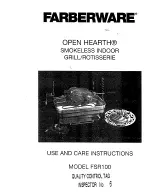
27
2.
Open the gas shut-off valve.
3.
Check the inlet joints of the gas train for tightness.
4.
Commissioning the system (see page 12).
5.
Check for tightness:
■
Outlet joints of the gas train
■
Joint between the fan and the fitting
■
Joint between the fan and the supply air collector
!
Please note
The use of leak detection spray can result in
faulty operation.
Leak detection spray must not come into contact
with electrical contacts.
Note
Only use suitable and approved leak detection agents
(EN 14291) and devices for the tightness test. Leak
detection agents with unsuitable constituents (e.g.
nitrides, sulphides) can cause material damage.
Remove residues of the leak detection agent after test-
ing.
Cleaning the condensate drain pipe and trap
Note
Clean the condensate drain pipe and trap at least once
a year.
A
B
Fig. 17
1.
Disconnect neutralising system condensate drain
hose
B
from trap
A
.
2.
Connect the cleaning hose to the trap and route it
to the drainage system.
3.
Clean the inside of the condensate drain pipe
(hose, pipes) and trap
A
.
4.
Fill the lower section of trap
A
with water and
secure.
Danger
If the trap is not full, flue gas can escape.
Escaping flue gas can cause life threatening
carbon monoxide poisoning.
Always fill the trap with water.
5.
Reconnect the condensate drain hose for the neu-
tralising system to the trap. Route the condensate
drain hose without kinks and with a constant fall.
Commissioning, inspection, maintenance
Checking the gas connections for tightness
(cont.)
5833296
















































